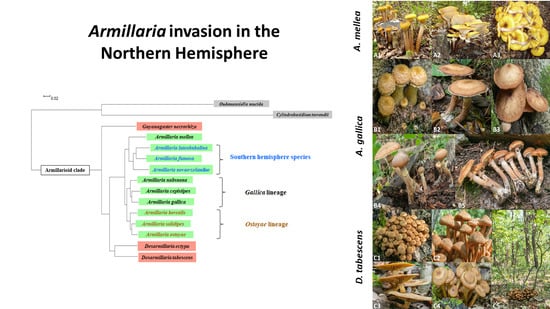Reviews for "Plant Pathogens" (Closed)
A topical collection in Pathogens (ISSN 2076-0817).
Viewed by 13287Editor
Interests: plant disease epidemiology and management; microbial ecology; population modelling/biology
Special Issues, Collections and Topics in MDPI journals
Topical Collection Information
Dear Colleagues,
With increasing global population size, decreasing land area for agriculture, and increased variability in climate, we are facing serious challenges in securing food provision. This is further exasperated by the crop losses caused by plant diseases. One well-known historical example is the potato late blight caused by Phytophthora infestans in the 1840s, causing more than a million Irish to attempt to emigrate. More recent examples include diseases caused by two bacterial pathogens: citrus greening disease caused by Candidatus Liberibacter spp. and a range of diseases caused by Xylella fastidiosa. The rapid increase of citrus greening disease has threatened the citrus industry not only in Florida, but in the entire USA. X. fastidiosa has caused severe yield losses in olives in Southern Europe. Several fungal pathogens not only cause significant crop losses but also result in contamination of food produce with mycotoxins, which may cause serious health problems to human and animals. These mycotoxigenic pathogens include Fusarium spp. and Aspergillus spp. The former produce Trichothecene on wheat grain, whereas the latter produces aflatoxins on infected groundnuts and ochratoxins in infected grapes. Plant pathogens can also cause rapid changes in our surrounding environment. For instance, severe tree mortalities in recent times are attributable to sudden oak death (caused by Phytophthora spp.) and ash die back (caused by Hymenoscyphus fraxineus) in the UK. Increased international trading and travel may also have led to increased long dispersal of pathogens over continents.
Up to now, disease management in commercial agriculture has been relying on scheduled applications of synthetic pesticides. This strategy has proven to be effective to a large extent. However, this approach of disease management has problems, including contamination of ground water, emergence and raid build-up of pathogenic strains that are resistant/insensitive to pesticides, and harmful effects against non-target organisms. Commercial agriculture is under ever-increasing pressure to deliver food security but with reducing reliance on pesticides. Furthermore, pesticide regulations are getting ever more restrictive and tighter, leading to a reduced number of registered synthetic pesticides as well as the amount that can be applied. To address the challenge posted by plant diseases with reduced pesticide input, much research and development has been focused on breeding crops with durable resistance and managing diseases with alternative means, such as biocontrol.
The current COVID-19 pandemics has focused the global attention on the potential effects of one human disease on daily life. To recognize the importance of managing plant diseases to food security, we are establishing a Collection specifically dedicated to Review Papers on plant pathogens. We sincerely hope and welcome submissions from all scholars in the field. All topics related to biology, epidemiology, and management of plant diseases are welcome. Reviews on the application of new and emerging technologies to plant disease management are especially welcome, such as detection and quantification of plant pathogens/diseases via remote sensing, application of AI in disease prediction, and application of microbial ecological concepts to disease management.
Prof. Dr. Xiangming Xu
Collection Editor
Manuscript Submission Information
Manuscripts should be submitted online at www.mdpi.com by registering and logging in to this website. Once you are registered, click here to go to the submission form. Manuscripts can be submitted until the deadline. All submissions that pass pre-check are peer-reviewed. Accepted papers will be published continuously in the journal (as soon as accepted) and will be listed together on the collection website. Research articles, review articles as well as short communications are invited. For planned papers, a title and short abstract (about 100 words) can be sent to the Editorial Office for announcement on this website.
Submitted manuscripts should not have been published previously, nor be under consideration for publication elsewhere (except conference proceedings papers). All manuscripts are thoroughly refereed through a single-blind peer-review process. A guide for authors and other relevant information for submission of manuscripts is available on the Instructions for Authors page. Pathogens is an international peer-reviewed open access monthly journal published by MDPI.
Please visit the Instructions for Authors page before submitting a manuscript. The Article Processing Charge (APC) for publication in this open access journal is 2700 CHF (Swiss Francs). Submitted papers should be well formatted and use good English. Authors may use MDPI's English editing service prior to publication or during author revisions.








